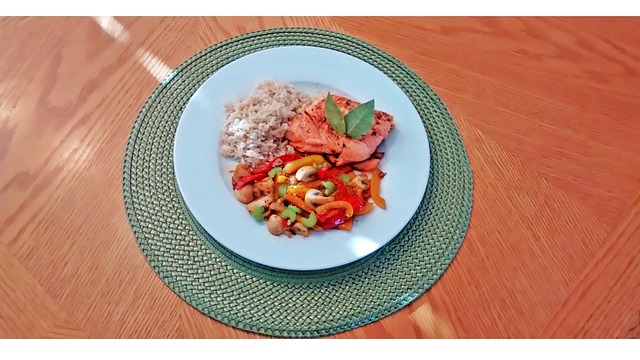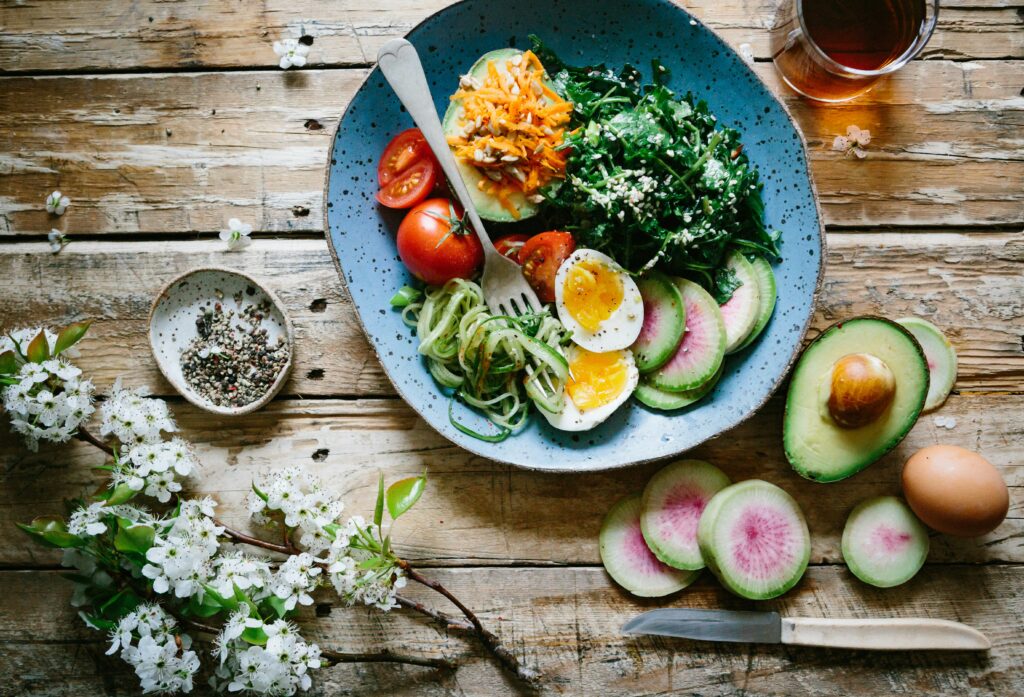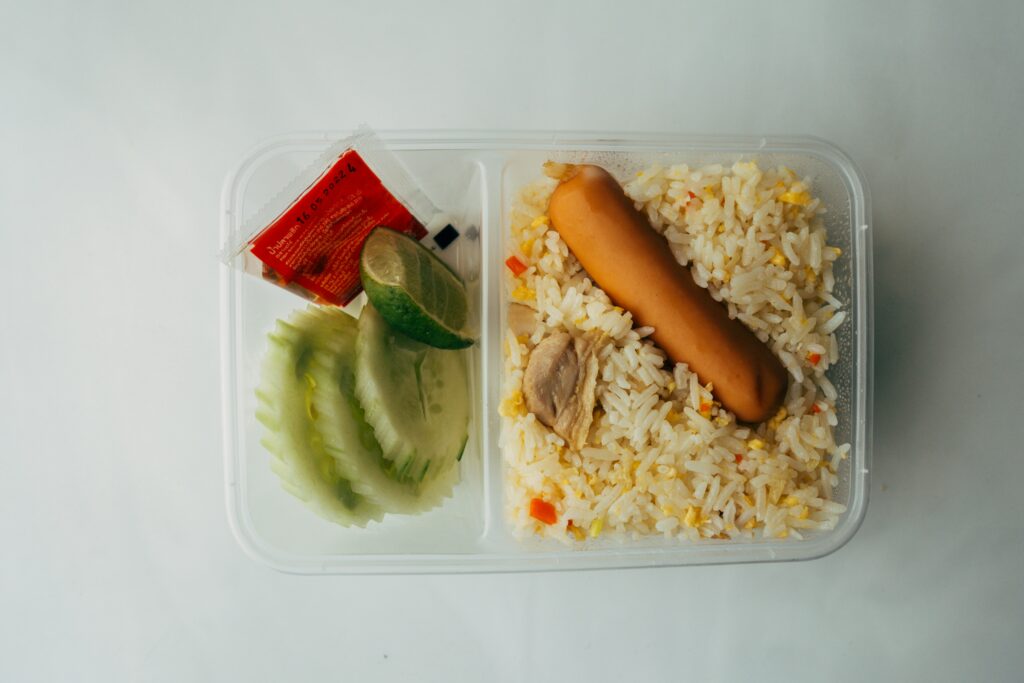Why Balance Matters
A balanced meal isn’t a trendy detox or a one-size-fits-all formula—it’s the baseline. It’s how you give your body what it needs to function now and stay strong later. Think of it like this: your food is either fueling you or fading you. A solid meal gives you enough carbs to move, protein to repair, fats to absorb and fight inflammation, and fiber to keep your system steady. It’s not about eating perfectly—it’s about hitting the right notes consistently.
In the short term, a balanced meal helps you steady your energy. No sugar spikes, no caffeine crashes. You stay full longer, think clearer, and don’t need to snack your way through the afternoon. Long term, it’s much bigger. Balanced meals help regulate blood sugar, maintain muscle, boost immunity, and lower your risk of chronic issues from heart disease to diabetes.
And no, this isn’t just about calories. You can hit 2,000 a day and still miss the mark. Quality matters. Five hundred calories of soda and chips won’t carry the same nutritional weight as 500 calories of salmon, quinoa, and roasted veggies. Balance means looking at what’s in your food, how it supports your body, and how all the pieces play together. Calories are just part of the picture—the easy part.
Tip 1: Start with Smart Carbs
Not all carbs are created equal. Whole grains like quinoa, brown rice, oats, and sweet potatoes bring more to the table than just calories. They’re packed with fiber, which slows digestion and keeps blood sugar stable. That means you get steady energy—not the spike-and-crash that comes from refined carbs like white bread or pastries.
Most refined carbs burn fast. You’ll feel good for an hour, then hit a wall. Whole carbs, on the other hand, fuel your body gradually. They keep you running through a full workday, workout, or long set of errands without the drag.
For everyday eating, lean into smart carbs. Half a cup of rolled oats in the morning or roasted sweet potatoes at lunch can be game changers. You don’t need to go low-carb—you just need to go better-carb.
Tip 2: Don’t Skip Protein
Protein isn’t just for bodybuilders—it’s a baseline need for everyone. At its core, protein rebuilds muscle tissue, supports your metabolism, and keeps you feeling full longer. That last part means fewer snack cravings two hours after a meal, which is half the battle for eating well.
There are two main camps when it comes to getting your protein: animal-based (like chicken, eggs, yogurt, beef, fish) and plant-based (like lentils, tofu, tempeh, beans, and quinoa). Animal protein gets the edge in terms of complete amino acid profiles, but plant sources bring fiber, antioxidants, and less saturated fat. Many people mix the two—and that’s a solid move.
So how much do you actually need? A rough guide: aim for 0.8 to 1.2 grams of protein per kilogram of body weight daily if you’re moderately active. That’s about 50–90 grams for most adults. Active folks and those aiming to build or preserve muscle might go higher.
Bottom line: don’t overlook protein. It quietly carries more nutritional weight than its trendy counterparts—and your body notices when it’s missing.
Tip 3: Load Up on Color (i.e., Vegetables + Fruits)
Vegetables and fruits aren’t just side players on the plate—they’re the backbone of any balanced meal. Their high fiber content helps keep you full longer and stabilizes blood sugar, which means fewer crashes and cravings. Plus, the vitamins and antioxidants they pack aren’t just for show. They directly support your immune system, reduce inflammation, and protect against chronic diseases like heart trouble and certain cancers.
Keeping variety in your produce game doesn’t mean blowing your budget. Aim for seasonal picks—they’re cheaper and taste better. Frozen options are solid too; they’re often just as nutritious and store well. Think in colors: green spinach, orange carrots, red bell peppers, purple cabbage. Each one brings a slightly different nutrient profile to the table, and when you mix them, you cover more ground without much effort.
Bottom line: more color on your plate equals better coverage for your health. It’s simple, affordable, and it works.
Tip 4: Healthy Fats Are Essential
Let’s clear this up—fat isn’t the enemy. But not all fats are pulling in the same direction when it comes to your health. The big picture: good fats support your brain, hormones, and energy levels; bad fats clog the pipes, raise inflammation, and mess with your mood.
Good fats come from whole foods. Think avocados, nuts, seeds (especially chia and flax), and fatty fish like salmon or mackerel. These are packed with omega-3 fatty acids—essential for heart health and fighting inflammation. Not getting enough? You’ll feel it in brain fog, joint stiffness, and slow recovery.
On the cooking front, it pays to know your oils. Go for extra virgin olive oil, avocado oil, or even a bit of sesame oil—these handle heat better and offer benefits your body can actually use. Avoid the usual suspects: hydrogenated oils, anything labeled “partially hydrogenated,” and too much vegetable oil blend (often a mix of pro-inflammatory oils like soybean or corn).
Bottom line? Don’t fear fats—choose them wisely. They’re fuel, not filler.
Tip 5: Watch Out for Hidden Pitfalls
Even meals that look healthy can be undermined by hidden ingredients. It’s not just what you eat—but what’s inside your food—that affects your health. Being aware of sneaky additives is a key step toward making smarter choices every day.
The Hidden Trio to Watch
Packaged foods often contain ingredients that tip the balance in the wrong direction. Understanding where they hide helps you avoid their negative effects.
- High sodium: Linked to increased blood pressure and heart strain; often found in canned soups, deli meats, frozen meals, and condiments.
- Added sugars: Appear in unexpected places like salad dressings, sauces, and low-fat products. Look for terms like “cane juice,” “corn syrup,” or anything ending in “-ose.”
- Ultra-processed ingredients: These include artificial flavors, preservatives, and additives. Frozen dinners, snack cakes, and flavored chips are common culprits.
Understanding Nutrition Labels
Making better choices begins at the grocery store. Learn to read nutrition facts and ingredient lists with purpose:
- Check the serving size: Nutritional info often applies to a smaller portion than expected.
- Scan the ingredients list: The shorter, the better. Ingredients are listed in order of quantity—from most to least.
- Watch for red flags: More than 5g of added sugar per serving, high sodium (over 20% daily value), or ingredients you can’t pronounce are signs to think twice.
Balance Means Steering Clear of Extremes
A balanced meal doesn’t mean eliminating all sodium or sugar—it means knowing when moderation matters.
- Avoid the trap of zero-this, low-that dieting. Total restriction rarely works long term.
- Focus on whole foods more often than not. If you do reach for packaged goods, aim for minimally processed options with simple ingredients.
- Remember: health isn’t about perfection—it’s about daily patterns that support your well-being.
Tip 6: Meal Structure = Less Mindless Eating
Balancing what you eat is just one half of the equation—how you structure your meals can be just as important. Paying attention to meal composition and planning ahead reduces the chances of reaching for unhealthy options when hunger strikes.
The Power of Portion Awareness
Being mindful of portions helps prevent overeating and supports better digestion, energy levels, and weight maintenance. Rather than obsessing over measuring every bite, focus on visual cues to guide your plate:
- Use your plate as a template—no need to count every calorie
- Pause before seconds—drink some water and give your body time to feel full
- Avoid eating straight from packages
Sample Plate Breakdown
A visually balanced plate sets the tone for nutritional balance:
- ½ Vegetables & Fruits: Leafy greens, peppers, broccoli, berries, apples—fresh or frozen
- ¼ Lean Protein: Chicken, beans, tofu, eggs, fish, lentils
- ¼ Carbohydrates: Brown rice, whole grain pasta, quinoa, sweet potato
- + Healthy Fats: A small drizzle of olive oil, sprinkle of seeds or nuts as needed
This “plate method” is a quick reference for creating balanced meals without heavy tracking.
Plan Ahead, Eat Smarter
Meal planning isn’t just for fitness enthusiasts—it’s a practical tool for anyone looking to eat better with less stress.
- Cut last-minute decisions: Knowing what you’ll eat reduces impulsive choices
- Prep versatile ingredients: Cook grains, chop veggies, and marinate proteins ahead of time
- Keep healthy options visible: Place fruits and nutritious snacks where you’ll see them
With a little structure, mealtime becomes a proactive act of nourishment instead of a reactive grab-and-go default.
Integrated Eating Style: The Mediterranean Model
If balance had a blueprint, it would look a lot like the Mediterranean diet. This isn’t about fads or hard rules—it’s a long-standing, real-world approach to eating that focuses on what fuels and sustains you. Think whole foods you recognize and can pronounce. Meals built around plants, not processed shortcuts. Cooking with olive oil, not drowning in butter. Lean proteins like fish and chicken, not mystery meat.
What makes this model effective is its flexibility. You’re not counting macros on a napkin or eliminating entire food groups. You’re building meals with intention—filling your plate with a variety of nutrients, flavor, and color. It’s food you’d actually want to eat, the kind you can share, and still feel good about.
This style isn’t just buzz—it’s backed by decades of research linking it to better heart health, weight management, and lower inflammation.
Want to dig deeper? Check out The Benefits of a Mediterranean Diet: What to Eat.
Final Advice: Keep It Consistent, Not Perfect
Healthy eating gets overcomplicated fast. But here’s the truth—it’s not about flawless food diaries or never touching dessert again. The win comes from consistency, not perfection. One solid meal won’t fix a week of fast food, but one off-day won’t destroy your progress either.
Start with what’s realistic. That might mean cooking at home three nights a week. Or swapping soda for water most days. Set goals you can maintain on a standard Tuesday, not some fantasy version of yourself.
Also, drop the all-or-nothing mindset. Skipping vegetables at lunch doesn’t mean dinner has to be a lost cause too. Long-term balance looks like variety over time, not a perfect plate every meal. Because the ultimate goal isn’t just eating healthy—it’s building habits you can live with, even on your busiest, messiest days.


 Jennifera is passionate about sharing culinary stories that blend tradition with innovation. At FoodHypeSaga she creates engaging articles that inspire readers to discover new dining experiences and food movements.
Jennifera is passionate about sharing culinary stories that blend tradition with innovation. At FoodHypeSaga she creates engaging articles that inspire readers to discover new dining experiences and food movements.

